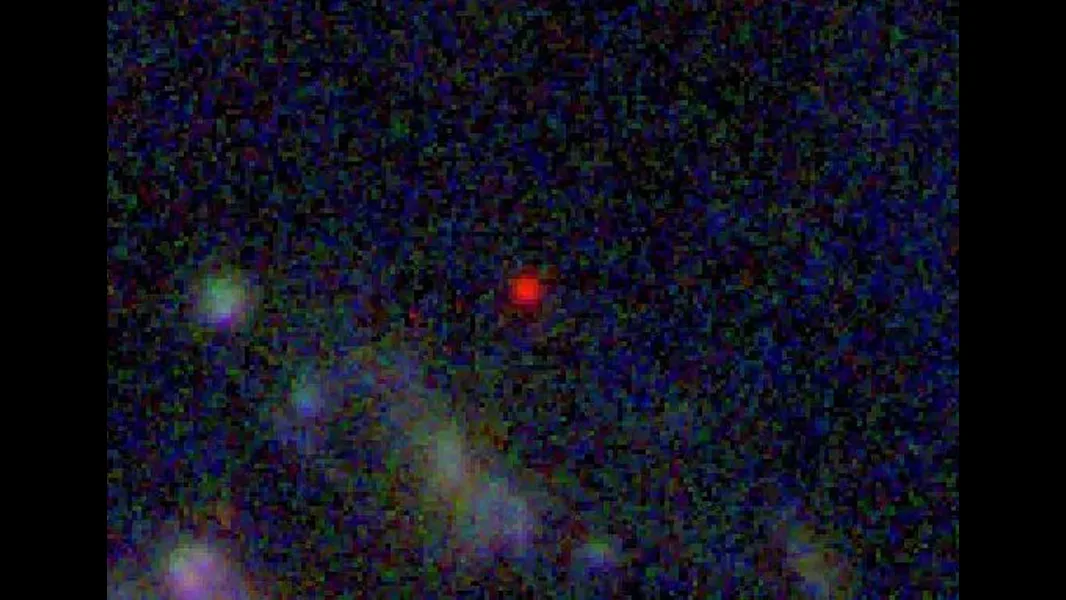
The oldest galaxy ever seen has been spotted by the James Webb Space Telescope
Webb's first science observations just set a new record for seeing the farthest out into space and furthest back in time.
Originally published on July 26, 2022, this article has been updated with new information.
It's only been two weeks since the very first images from Webb were revealed to the world. One of those spectacular views of the cosmos was the furthest look ever back in time and the farthest distance seen out into the cosmos. In that 'deep field' view were galaxies older than 13 billion years.
Now, a team of astronomers has seen even further back in time. Poring over some of the earliest science observations the telescope took, they found a galaxy that stood out from the rest.
Named GLASS-z13, this appears to be the oldest galaxy we've ever seen.
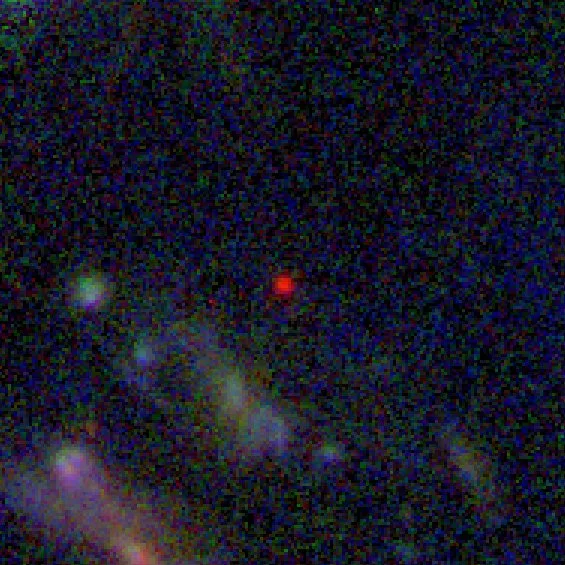
GLASS-z13 in JWST NIRCam (Naidu et al. 2022). Image composite: Gabriel Brammer (Cosmic Dawn Center, Niels Bohr Institute, University of Copenhagen). Raw data: T. Treu (UCLA) and GLASS-JWST.
The image above combines several different wavelengths of infrared light, which were set as different colours of the visible spectrum. Blues represent the shortest wavelengths and reds the longest wavelengths. The intense red of GLASS-z13 (at the centre) means that it is only picked up at the longest of wavelengths seen by Webb's NIRCam instrument.
According to Rohan Naidu, the lead author of the research paper detailing this discovery, NIRCam is only seeing this galaxy in the longest of wavelengths because the shorter wavelengths are all being lost before the light gets to us.
"At really high redshifts, the Universe is full of neutral Hydrogen that soaks up all the blue photons in these spectra resulting in this 'dropout' behaviour," Naidu said in a post on Twitter.
Based on their study, currently in draft form on the arvix preprint server and submitted to Astrophysical Journal Letters for consideration, GLASS-z13 has a redshift of z=13 (thus, its name). Thus, it could be from just 300 million years after the Big Bang. That would make it the oldest galaxy we've ever seen!
UPDATE (July 28, 2022): Only a week has gone by since the discovery of GLASS-z13, and we already have new contenders for oldest galaxy!
Led by Callum Donnan of the University of Edinburgh, a team scoured the deep field imagery from Webb to find the oldest galaxies. Their paper, also up on Arvix, details six galaxies with extreme redshifts. The most remarkable is named CEERS-93316, which has a redshift of z=16.7. That would mean that we're seeing it as it was just 235 million years after the Big Bang!
Another paper mentions the discovery of another galaxy with an even higher redshift, z=20.6! Now we're pushing the limits of Webb's abilities, since the light from this galaxy was apparently emitted just 160 to 180 million years after the universe formed!
The original story continues below.
Watch Below: Out of this World - Compare the clarity of James Webb telescope's images with Hubble's
What's going on here?
The 'dropout' referred to by is similar to why we see red skies at sunset and sunrise. The light from the Sun is scattered as it passes through Earth's atmosphere. The shorter blue wavelengths are scattered first, so we see a blue sky throughout much of the day. However, the more atmosphere the light passes through, the more wavelengths that are scattered. Thus, when the Sun is on the horizon, its light passes through enough air that blue, green, and yellow are all filtered out, leaving only oranges and reds to reach our eyes. This is also why lunar eclipses turn the Moon red, since only the red light escapes from the night side of the atmosphere to shine onto the lunar surface.
In the case of GLASS-z13, the photons of light it has emitted have been passing through the vast, nearly empty expanse of space. For those photons to have encountered enough 'stuff' to scatter or absorb all of the shorter wavelengths, they had to travel an extremely far distance.
Additionally, as these photons were travelling, the universe was in the process of expanding. So, over time, as these energetic light particles oscillated up and down, back and forth, each oscillation gradually covered a greater and greater distance. This stretched the wavelength of the light, shifting the colours of all the photons towards red and infrared. This is the "redshift" that astronomers talk about when discussing distant objects in the universe.
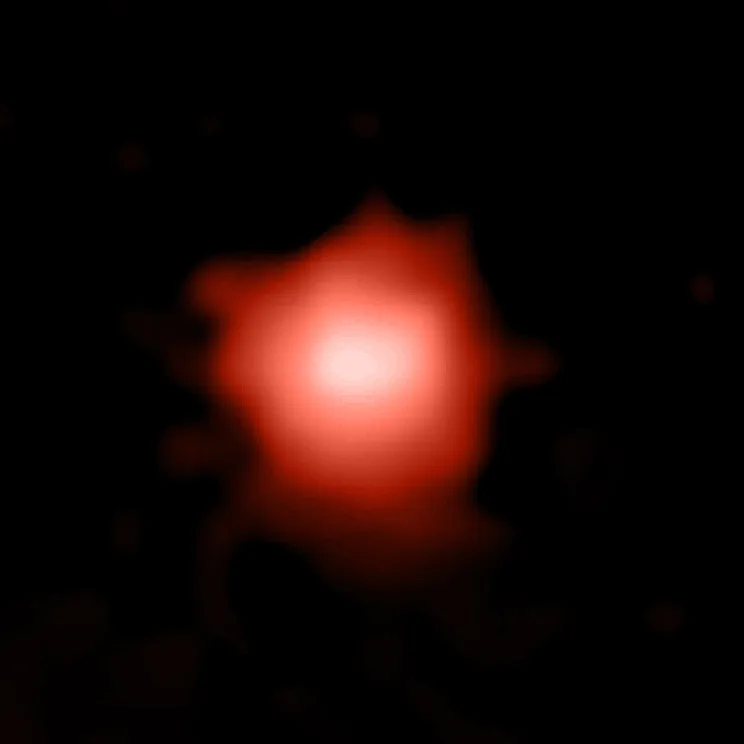
Zoom in on GLASS-z13 in JWST NIRCam (Naidu et al. 2022). Image: Pascal Oesch (University of Geneva & Cosmic Dawn Center, Niels Bohr Institute, University of Copenhagen). Raw data: T. Treu (UCLA) and GLASS-JWST. NASA/CSA/ESA/STScI
The photons that finally reached us here and were captured by NIRCam have been stretched so much, and so many of the shorter wavelengths have just been filtered out by the 'stuff' that lies in between the galaxies and stars that it provides us with an idea of just how far away GLASS-z13 was when it emitted those photons. And since light takes a precise amount of time to travel through space, we can also tell how long ago that was.
In their study, Naidu and his colleagues determined that GLASS-z13 is from 13.4-13.5 billion years ago. That means we see it as it was when the universe was just 300-400 million years old, or about 2-3 per cent of its current age.
Before this, the oldest galaxy astronomers had ever seen was GNz-11, which was spotted by the Hubble Space Telescope in 2015.

Hubble Space Telescope astronomers found galaxy GN-z11, shown in the inset, as seen as it was 13.4 billion years in the past, just 400 million years after the Big Bang. Credit: NASA, ESA, P. Oesch (Yale University), G. Brammer (STScI), P. van Dokkum (Yale University), and G. Illingworth (University of California, Santa Cruz)
The 'z factor' in the names of these galaxies (GN-z11 and GLASS-z13) represents how much their light has been redshifted. In the case of z=11, we see the galaxy as it was 13.4 billion years ago. This is roughly the same age as the second galaxy reported by this new study, GLASS-z11.
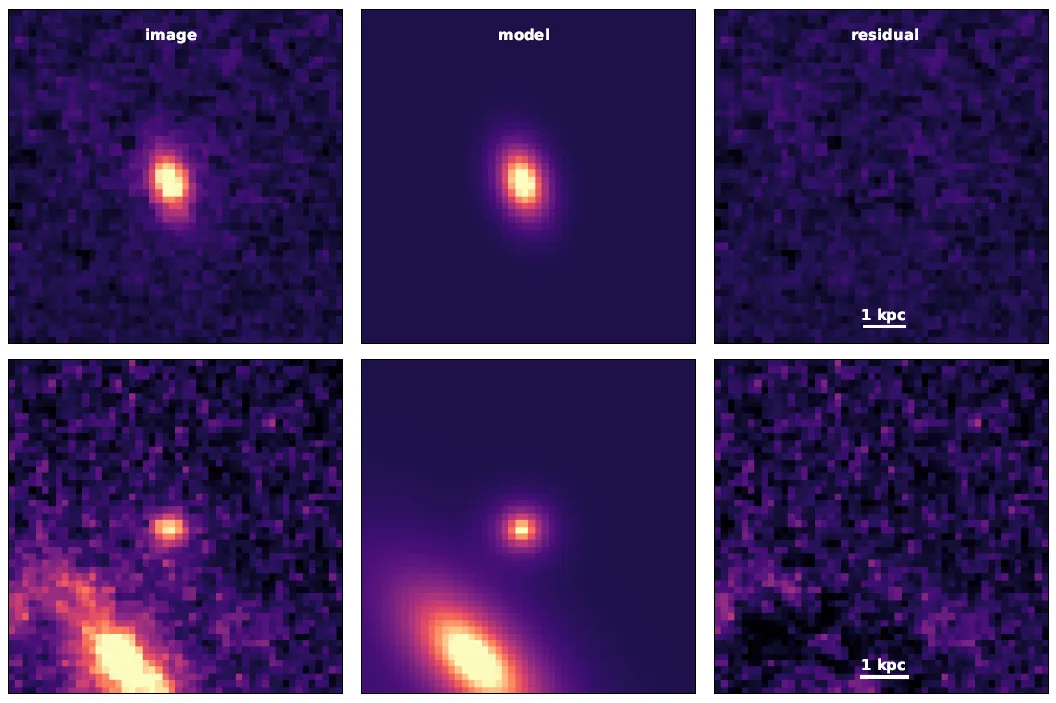
GLASS-z11 (top tow) and GLASS-z13 (bottom row) are shown here in JWST NIRCam images (left), along with computer simulations of them (centre). The less left behind in the residual image (right), the more accurately the simulation modelled the galaxy. Credit: Naidu et al. 2022
Naidu says that, despite the potential record set by GLASS-z13, GLASS-z11 is actually his favourite of the two galaxies from this study.
GN-z11 just showed up as a dim splotch back in 2015, so it was difficult to tell what kind of structure galaxies had that early in the universe. However, based on the simulation of GLASS-z11, it clearly shows up in JWST's imagery as a disk galaxy. Thus, GLASS-z11 provides a much clearer picture of what the universe was like back then.
A record, for sure, but not for long
JWST detecting light with a redshift of z=13 means that it has already pushed our view of the universe another 100 million years closer to the big bang. The remarkable thing about this is how quickly Webb gathered the observations that led to this discovery.
Although GLASS-z13 likely holds the new record for farthest galaxy ever seen and the furthest we've seen back in time, it probably won't hold that title for very long.
According to NASA, the James Webb Space Telescope can look out into space and back in time even farther than this.
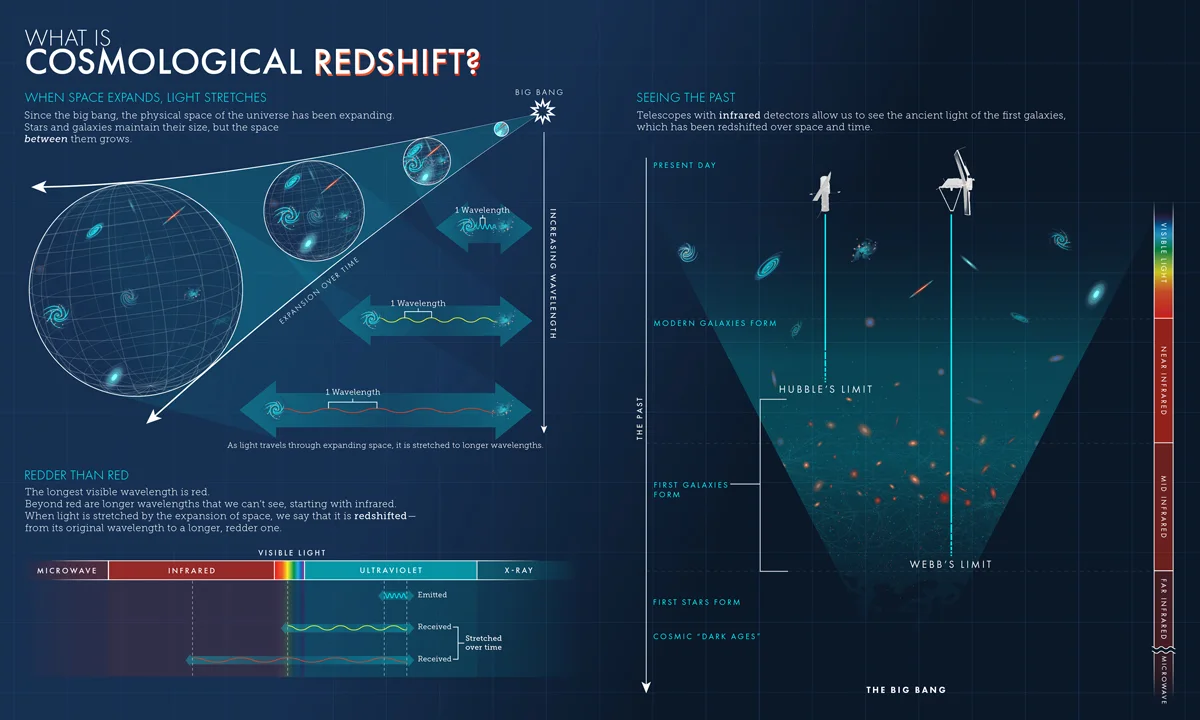
This infographic details how the light from distant galaxies is redshifted while showing off how far JWST can see compared to Hubble. Credit: NASA, ESA, Leah Hustak (STScI)
Simply by focusing the telescope on a patch of space for an even longer period of time, its cameras will be able to pick up light from as far back as 13.5 billion years. Astronomers may even be able to stretch that to see the light from just 100 million years after the Big Bang. There, they hope to see the first stars in the first galaxies to form in the cosmos.
